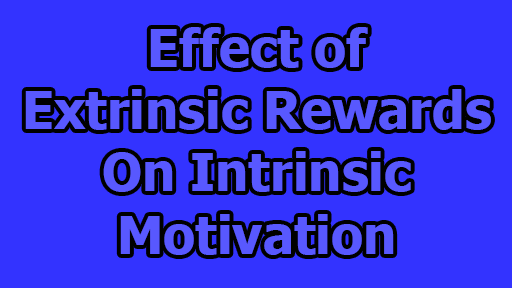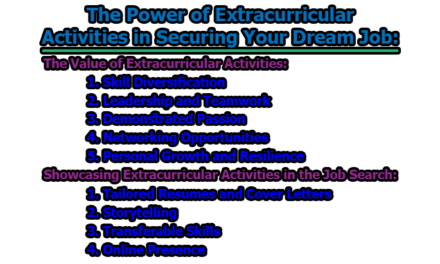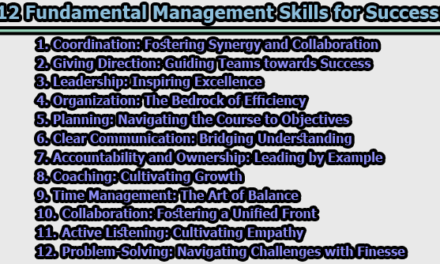Effect of Extrinsic Rewards on Intrinsic Motivation:
Motivation is a fundamental aspect of human behavior that drives individuals to pursue and accomplish their goals. It can be broadly categorized into two primary forms: intrinsic motivation, which arises from within an individual, and extrinsic motivation, which is driven by external factors such as rewards, recognition, or punishments. The interplay between these two types of motivation has been a subject of great interest and debate among psychologists, educators, and researchers. This article will explore the effect of extrinsic rewards on intrinsic motivation.
Understanding Intrinsic and Extrinsic Motivation:
1. Intrinsic Motivation: Intrinsic motivation is the inner drive that compels individuals to engage in an activity for its inherent satisfaction or personal interest. When someone is intrinsically motivated, the activity itself is the reward. This form of motivation often leads to a sense of enjoyment, curiosity, and a deep sense of satisfaction.
Examples of intrinsic motivation can be found in activities like pursuing a hobby, solving puzzles, or learning a new skill just for the joy of it. Intrinsic motivation is believed to be a powerful force for personal growth and development, as individuals are more likely to persist in tasks they find intrinsically rewarding.
2. Extrinsic Motivation: Extrinsic motivation, on the other hand, is driven by external factors or rewards that are separate from the activity itself. These rewards can take various forms, such as money, praise, grades, or prizes. Extrinsic motivation often comes into play when individuals are incentivized to perform a task due to the rewards associated with it.
For instance, students may study for exams to earn good grades, employees may work diligently to receive a bonus, or athletes may train rigorously to win a championship. While extrinsic motivation can be effective in getting people to complete tasks, the focus is primarily on the outcome or reward rather than the enjoyment of the activity itself.
Theories on the Interaction Between Extrinsic Rewards and Intrinsic Motivation:
To understand the complex relationship between extrinsic rewards and intrinsic motivation, we must explore several psychological theories and frameworks that have been developed over the years. These theories shed light on the conditions under which extrinsic rewards may enhance or diminish intrinsic motivation.
A. Overjustification Theory: The Overjustification Theory, proposed by Lepper, Greene, and Nisbett in 1973, suggests that when individuals who initially engage in an activity for intrinsic reasons are later rewarded extrinsically, their intrinsic motivation may decrease. The idea is that the external reward overshadows the inherent enjoyment of the task, making it less appealing.
For example, consider a child who loves drawing for the sheer pleasure of it. If the child is then given a reward, such as a cash prize, for their artwork, they may start to view drawing as a means to an end (earning money) rather than an intrinsically enjoyable activity. Consequently, their intrinsic motivation to draw may diminish.
However, it’s important to note that not all extrinsic rewards lead to a decrease in intrinsic motivation. The impact of extrinsic rewards on intrinsic motivation depends on various factors, such as the individual’s prior level of intrinsic motivation and the nature of the rewards.
B. Self-Determination Theory: Self-Determination Theory (SDT), developed by Deci and Ryan in the 1980s, offers a more nuanced perspective on the relationship between intrinsic and extrinsic motivation. According to SDT, human motivation falls along a continuum, ranging from intrinsic motivation (autonomous) to extrinsic motivation (controlled).
SDT posits that the key to maintaining and even enhancing intrinsic motivation in the presence of extrinsic rewards lies in the extent to which these rewards support individuals’ autonomy, competence, and relatedness. When extrinsic rewards are perceived as providing choice, competence-building opportunities, and a sense of connection, they can facilitate intrinsic motivation rather than undermine it.
For example, if a company rewards its employees with a bonus for completing a challenging project and involves them in the decision-making process, recognizes their competence, and fosters a sense of teamwork, the extrinsic reward may actually enhance the employees’ intrinsic motivation to perform well.
C. Cognitive Evaluation Theory: Cognitive Evaluation Theory, also proposed by Deci, extends the ideas of SDT. This theory suggests that the impact of extrinsic rewards on intrinsic motivation depends on how these rewards affect an individual’s perception of their own competence and autonomy.
When extrinsic rewards are used as informational or feedback cues, they can enhance intrinsic motivation. For instance, if a student receives positive feedback (extrinsic reward) on their essay, it can boost their belief in their own writing abilities and, in turn, their intrinsic motivation to write.
On the other hand, if extrinsic rewards are perceived as controlling or undermining autonomy, they may have a detrimental effect on intrinsic motivation. In this case, individuals might feel pressured or manipulated, leading to a decrease in their intrinsic motivation.
Real-World Applications and Examples:
To further illustrate the complex relationship between extrinsic rewards and intrinsic motivation, let’s explore some real-world scenarios:
I. Education: In the field of education, the use of grades and external incentives such as stickers or prizes has long been a topic of debate. Some argue that relying heavily on extrinsic rewards can undermine students’ love for learning. For example, if students are primarily motivated by the desire to earn good grades, they may be less likely to explore subjects purely out of curiosity.
However, when educators employ strategies that promote autonomy, competence, and relatedness, extrinsic rewards can be used effectively. Providing students with choices in their learning, offering opportunities for skill development, and fostering a supportive classroom environment can help maintain and even enhance intrinsic motivation.
II. Workplace: In the workplace, the impact of extrinsic rewards on employee motivation varies depending on how these rewards are implemented. If employees feel that their efforts are acknowledged and rewarded fairly, it can boost their intrinsic motivation to excel in their roles. However, if extrinsic rewards are used as mere carrots and sticks to control behavior, they may erode intrinsic motivation.
Companies that foster a culture of autonomy, where employees have a say in decision-making, opportunities for skill development, and a sense of belonging, often see higher levels of intrinsic motivation. Google’s “20% time” policy, which allows employees to spend a portion of their workweek on projects of personal interest, is an example of how intrinsic motivation can be harnessed within a corporate setting.
III. Creativity: Creativity is a domain where intrinsic motivation plays a significant role. Artists, writers, musicians, and inventors are often driven by an inner passion for their craft. When extrinsic rewards, such as financial gain or fame, become the primary focus, it can stifle the creative process.
In the world of art, for instance, artists who create primarily for commercial success may find that their work becomes formulaic and lacks the depth and authenticity of those who create purely for the joy of self-expression. However, when extrinsic rewards come as a result of artistic success rather than a primary goal, they may serve as a form of recognition and validation, which can enhance intrinsic motivation.
Factors Influencing the Impact of Extrinsic Rewards:
Several factors influence how extrinsic rewards affect intrinsic motivation. It’s crucial to consider the following factors when assessing the potential outcomes of introducing external incentives.
1. Timing of Rewards: The timing of extrinsic rewards plays a pivotal role in determining their influence on intrinsic motivation. When individuals receive immediate rewards, right after completing a task, these rewards often serve as feedback, reinforcing the intrinsic satisfaction of the activity. In such cases, individuals perceive the rewards as related to their performance, and this alignment can strengthen their intrinsic motivation.
In contrast, delayed or contingent rewards, which come later or are tied to specific conditions, can shift the focus from the intrinsic aspects of the activity to the extrinsic reward itself. This can potentially diminish intrinsic motivation as individuals start to associate the task more with the reward than with the inherent satisfaction derived from the activity.
2. Type of Rewards: The nature of extrinsic rewards significantly impacts their effect on intrinsic motivation. Tangible rewards, such as money, physical gifts, or prizes, tend to carry a higher risk of diminishing intrinsic motivation. When individuals receive tangible rewards, especially if these rewards are substantial, they might become overly focused on external incentives, potentially overshadowing the intrinsic appeal of the task. This can lead to the overjustification effect, where intrinsic motivation decreases as extrinsic rewards increase.
On the other hand, intangible rewards, like praise, recognition, or constructive feedback, are often perceived as less controlling and more autonomy-supportive. These rewards can provide individuals with a sense of acknowledgment and appreciation for their efforts without necessarily detracting from their intrinsic motivation. In many cases, such rewards can even enhance intrinsic motivation by reinforcing the perception of competence and relatedness.
3. Individual Differences: Individual differences in personality traits and past experiences with rewards can significantly influence how extrinsic rewards impact intrinsic motivation. Some individuals are naturally more externally motivated and are more responsive to external incentives. These individuals may be more likely to have their intrinsic motivation affected by extrinsic rewards, particularly if the rewards are substantial or controlling in nature.
Conversely, those who are inherently intrinsically motivated by nature may be less influenced by extrinsic factors. They might maintain their intrinsic motivation regardless of the presence of external incentives. Past experiences with rewards, whether positive or negative, can also shape how individuals respond to extrinsic rewards. Positive past experiences may make individuals more receptive to external incentives, while negative experiences can create resistance and skepticism.
4. Perceived Autonomy and Competence: The way individuals perceive extrinsic rewards in relation to their autonomy and competence can determine their impact on intrinsic motivation. When rewards are seen as providing choices and supporting an individual’s autonomy, they are less likely to undermine intrinsic motivation. In such cases, individuals may view the rewards as positive feedback that acknowledges their competence and effort rather than as controlling mechanisms.
Moreover, when individuals feel competent in a task and believe that their skills are recognized and valued, extrinsic rewards can reinforce their intrinsic motivation. The perception that they are receiving rewards because they are good at what they do can enhance their sense of competence, which in turn bolsters their intrinsic motivation.
5. Task Characteristics: The nature of the task itself plays a significant role in how extrinsic rewards impact intrinsic motivation. Tasks that are inherently interesting, enjoyable, or aligned with an individual’s passions are generally less susceptible to the negative effects of extrinsic rewards. In these cases, individuals might continue to find the task intrinsically rewarding despite the presence of external incentives. The intrinsic appeal of the activity remains strong, making it resilient to the potential undermining effects of rewards.
However, when tasks are perceived as monotonous, repetitive, or lacking inherent interest, they become more vulnerable to the negative impact of extrinsic rewards. In such situations, individuals may start to view the rewards as the primary reason for engaging in the task, shifting their focus away from the intrinsic satisfaction they might have initially derived from it.
6. Extrinsic Reward Size and Frequency: The size or magnitude of extrinsic rewards can have a notable influence on their impact. Larger rewards, whether monetary or otherwise, may have a more pronounced effect in shifting motivation toward the external incentive. When individuals are offered substantial rewards, they may be more inclined to prioritize the pursuit of these rewards over the intrinsic enjoyment of the activity.
Additionally, the frequency with which rewards are given can shape how individuals respond. Frequent rewards, given for repeated instances of behavior or task, might condition individuals to expect external reinforcement. This conditioning can potentially diminish the intrinsic appeal of the activity, as individuals come to anticipate rewards as the primary motivator.
7. Social Context: The social context in which extrinsic rewards are presented can significantly influence their impact on intrinsic motivation. The presence of peers or social pressure can affect how individuals perceive and respond to extrinsic rewards. When individuals are in competitive environments or feel the need to meet social expectations, they may become more focused on extrinsic outcomes, such as rewards or recognition.
Conversely, a supportive social context that emphasizes the value of intrinsic factors, such as personal growth and passion, can mitigate the potential negative effects of extrinsic rewards. When individuals are surrounded by peers and mentors who encourage them to derive satisfaction from the process and the intrinsic aspects of their pursuits, they are more likely to maintain their intrinsic motivation.
8. Intrinsic Interest and Passion: The preexisting level of intrinsic motivation and passion individuals have for a particular pursuit can significantly shape how they perceive and respond to extrinsic rewards. High levels of intrinsic motivation can act as a protective factor against the negative effects of extrinsic rewards. Individuals who are intrinsically interested in an activity may maintain their enthusiasm even in the presence of external incentives.
Furthermore, individuals who are deeply passionate about a particular pursuit may view extrinsic rewards as secondary to their genuine interest. For these individuals, the intrinsic satisfaction derived from their passion remains the primary driver of their motivation, allowing them to coexist harmoniously with extrinsic rewards.
9. Expectancy and Contingency: The presence of expectancy and the degree of contingency associated with extrinsic rewards can influence their impact. If individuals expect to receive an extrinsic reward for a particular task or behavior, the reward may have a more significant influence on their motivation. Expectancy sets the stage for individuals to view the reward as a contingent outcome, potentially shifting their focus toward the reward itself.
The level of contingency, or the extent to which the reward is tied to specific performance criteria, can also shape the impact of rewards. Highly contingent rewards, where individuals must meet strict conditions to receive the reward, may lead them to prioritize achieving the reward over the intrinsic aspects of the task.
10. Cultural and Societal Norms: Cultural values and societal norms play a significant role in shaping how individuals respond to extrinsic rewards. In some cultures, external recognition and rewards may be highly prized and motivating. In such contexts, individuals may be more receptive to extrinsic incentives, as they align with cultural expectations.
Conversely, in cultures that prioritize intrinsic factors, such as personal fulfillment and creativity, individuals may place less emphasis on extrinsic rewards. These cultural norms can influence how individuals perceive and value external incentives in relation to their intrinsic motivation.
Balancing Extrinsic and Intrinsic Motivation:
Balancing extrinsic and intrinsic motivation is a complex but crucial endeavor for fostering a motivated and engaged environment. Let’s explore these strategies:
- Promote Autonomy: Encouraging autonomy involves allowing individuals to have a say in their goals, tasks, and the way they approach their work or learning. When people feel a sense of control over their actions, they are more likely to experience intrinsic motivation. This can be achieved by:
- Allowing students to choose their research topics or projects in education.
- Giving employees some flexibility in how they complete their tasks in the workplace.
- Providing options for personal development and learning paths.
- Offer Opportunities for Skill Development: Providing opportunities for skill development can enhance intrinsic motivation by increasing an individual’s sense of competence and mastery. To achieve this:
- Offer training and development programs that help individuals acquire new skills.
- Provide constructive feedback that helps individuals improve their abilities.
- Encourage individuals to set challenging but attainable goals that require skill development.
- Foster a Sense of Relatedness: Humans are social beings, and a sense of relatedness or belonging can significantly impact motivation. This can be accomplished by:
- Creating collaborative learning or working environments.
- Encouraging team projects and group discussions.
- Recognizing and valuing the contributions of each individual within a social context.
- Use Extrinsic Rewards Wisely: Extrinsic rewards, when used thoughtfully, can complement intrinsic motivation rather than undermine it. To do so:
- Ensure that rewards are aligned with desired behaviors and performance.
- Offer timely and specific feedback along with rewards.
- Recognize not only final outcomes but also effort and progress.
- Emphasize Intrinsic Rewards: Highlighting the inherent satisfaction and joy derived from engaging in an activity is essential for maintaining intrinsic motivation. This involves:
- Encouraging individuals to focus on the process, the journey, and the enjoyment of learning or working.
- Promoting the idea that the pursuit of personal interests and passions is rewarding in itself.
- Showcasing the intrinsic value of creativity, innovation, and personal growth.
- Create a Motivational Climate: Establishing a motivational climate that values both intrinsic and extrinsic motivation is crucial. This can be achieved by:
- Recognizing and celebrating achievements, whether they result from intrinsic or extrinsic motivations.
- Encouraging individuals to pursue their passions and interests while acknowledging their achievements.
- Promoting a growth mindset where individuals view challenges as opportunities for learning and development.
In conclusion, the effect of extrinsic rewards on intrinsic motivation is a dynamic interplay that hinges on numerous factors, including the nature of the rewards, individual differences, and the context in which they are employed. While extrinsic rewards have the potential to enhance motivation when thoughtfully applied, they can also undermine intrinsic motivation when used inappropriately or excessively. The key lies in striking a delicate balance, where extrinsic rewards are integrated to complement, rather than supplant, intrinsic motivation. By promoting autonomy, offering skill development opportunities, fostering a sense of relatedness, and emphasizing the inherent joy of the task itself, it is possible to create environments in which both forms of motivation coexist harmoniously. When individuals are driven by a genuine passion for their pursuits while receiving appropriate external recognition and rewards, they can achieve remarkable feats and experience enduring satisfaction in their endeavors. In essence, understanding and harnessing the complex relationship between extrinsic and intrinsic motivation is not just an academic pursuit but a practical means of unlocking human potential and fostering motivation across various facets of life.
References:
- Deci, E. L., Koestner, R., & Ryan, R. M. (1999). A meta-analytic review of experiments examining the effects of extrinsic rewards on intrinsic motivation. Psychological Bulletin, 125(6), 627-668.
- Cameron, J., & Pierce, W. D. (1996). Reinforcement, reward, and intrinsic motivation: A meta-analysis. Review of Educational Research, 66(4), 599-641.
- Ryan, R. M., & Deci, E. L. (2000). Intrinsic and extrinsic motivations: Classic definitions and new directions. Contemporary Educational Psychology, 25(1), 54-67.
- Pink, D. H. (2009). Drive: The Surprising Truth About What Motivates Us. Riverhead Books.
- Gneezy, U., Meier, S., & Rey-Biel, P. (2011). When and why incentives (don’t) work to modify behavior. Journal of Economic Perspectives, 25(4), 191-210.
- Kohn, A. (1999). Punished by Rewards: The Trouble with Gold Stars, Incentive Plans, A’s, Praise, and Other Bribes. Mariner Books.
- Lepper, M. R., & Henderlong, J. (2000). Turning “play” into “work” and “work” into “play”: 25 years of research on intrinsic versus extrinsic motivation. In C. Sansone & J. M. Harackiewicz (Eds.), Intrinsic and extrinsic motivation: The search for optimal motivation and performance (pp. 257-307). Academic Press.
- Pink, D. H. (2011). Drive: The Surprising Truth About What Motivates Us. Canongate Books.
- Eisenberger, R., & Cameron, J. (1996). Detrimental effects of reward: Reality or myth? American Psychologist, 51(11), 1153-1166.
- Deci, E. L., Vallerand, R. J., Pelletier, L. G., & Ryan, R. M. (1991). Motivation and education: The self-determination perspective. Educational psychologist, 26(3-4), 325-346.

Library Lecturer at Nurul Amin Degree College










